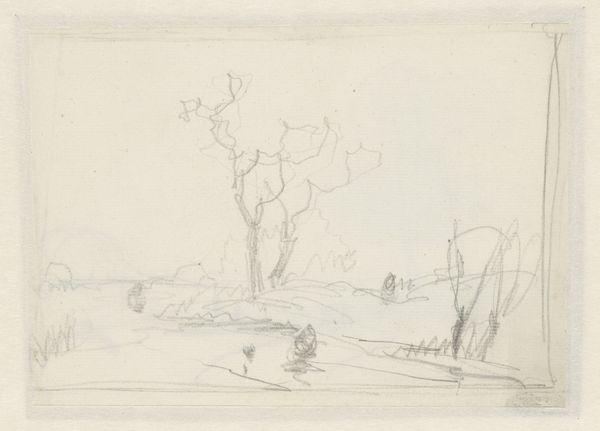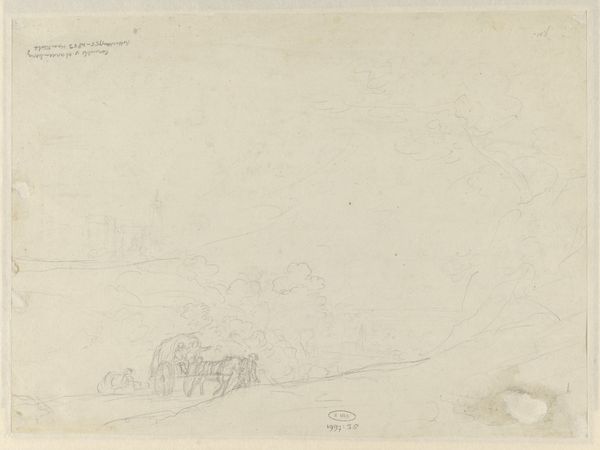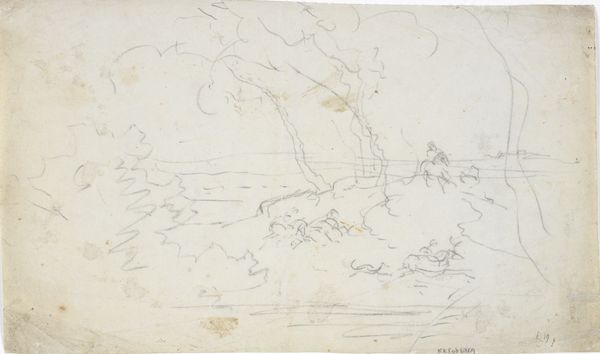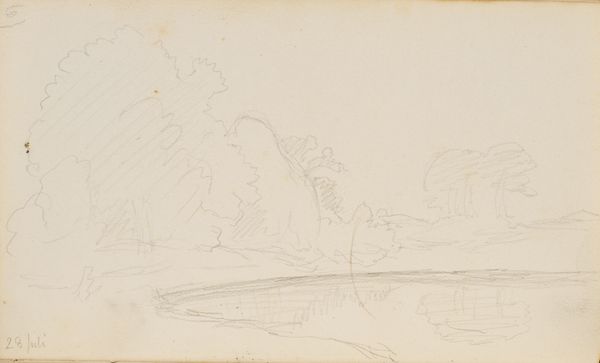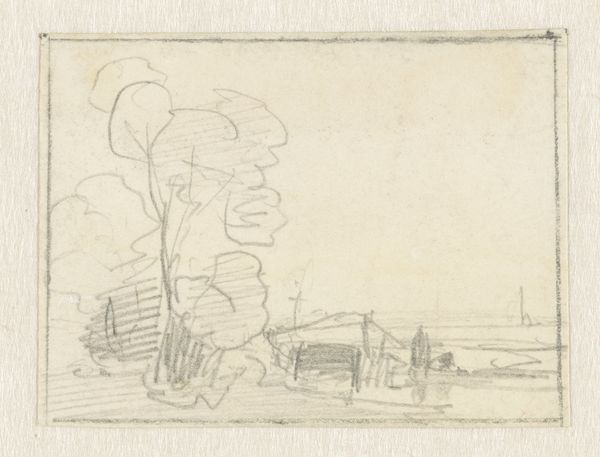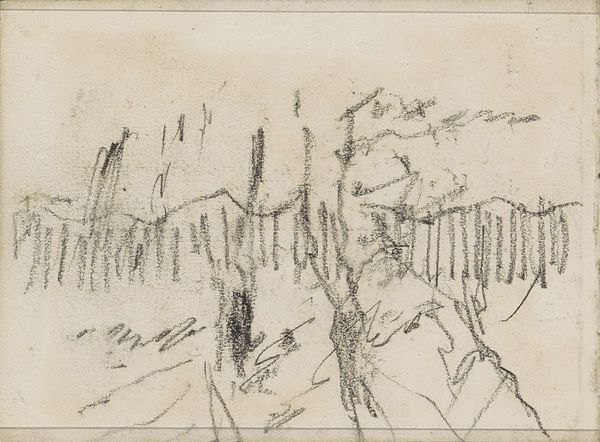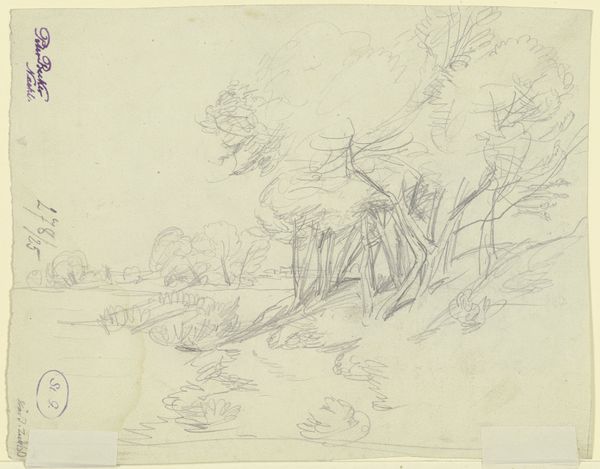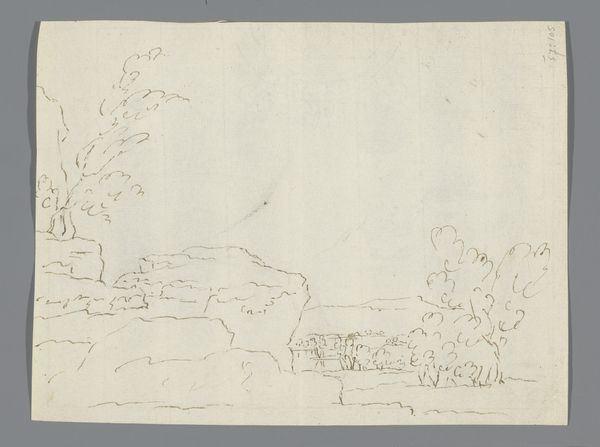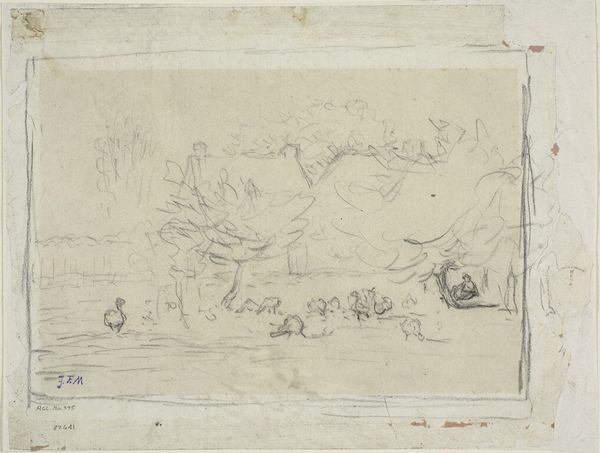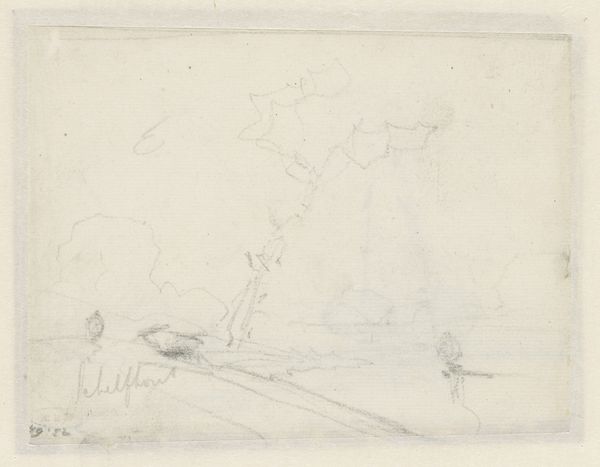
drawing, pencil
#
drawing
#
16_19th-century
#
dutch-golden-age
#
landscape
#
pencil
#
genre-painting
#
realism
Dimensions: height 293 mm, width 423 mm
Copyright: Rijks Museum: Open Domain
Curator: What strikes me about this drawing, "Herder met kudde schapen", or "Shepherd with a Flock of Sheep," made sometime between 1848 and 1888, by Anton Mauve, is how spare it is. The landscape is just barely there. Editor: It’s interesting how minimal it is, almost like a memory fading. The muted pencil strokes create a hazy atmosphere, giving me a sense of quiet solitude. The grey paper really enhances that feeling. Curator: Exactly. The use of pencil on paper keeps the focus on the essence of the scene: the shepherd, the huddled sheep, the distant horizon. Sheep are of course ancient symbols. They're in the Bible, Greek myths... So why depict them? What do they mean to you here? Editor: Traditionally, sheep symbolize innocence, passivity, belonging, even sacrifice, right? I think here, given how they almost merge with the land, they speak to a humble life lived in concert with nature. They suggest perhaps contentment in simplicity? A life less troubled by progress. Curator: Perhaps... Or maybe they also represent vulnerability? Dependent on the shepherd, who, in turn, is also exposed in the vast landscape. It makes me think about the fleeting nature of human life compared to the slower rhythms of nature itself. It also has all those Golden Age vibes in the theme if not in execution. Editor: It is a Dutch master taking on an age-old theme, for sure. Ultimately, Mauve's drawing creates space for introspection. Curator: Absolutely. It invites us to consider our relationship with the natural world, and perhaps, our own symbolic roles within it. It’s deceptive, this simple scene. Editor: Very true. And maybe simplicity itself is the point: cutting through the noise to focus on what endures, which can be powerful in our current context. Thanks, Mauve.
Comments
No comments
Be the first to comment and join the conversation on the ultimate creative platform.
